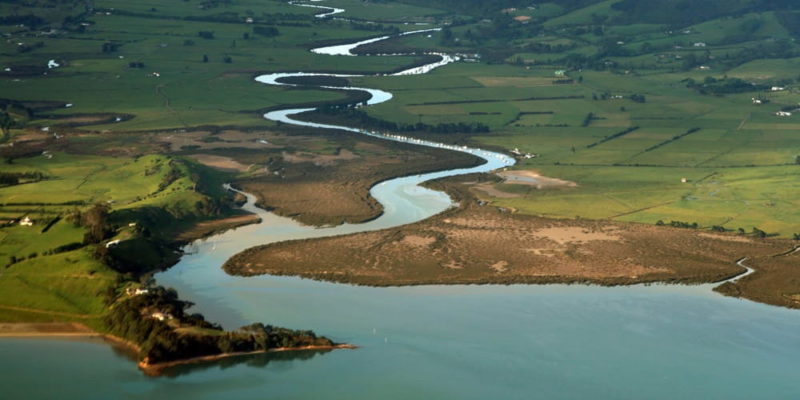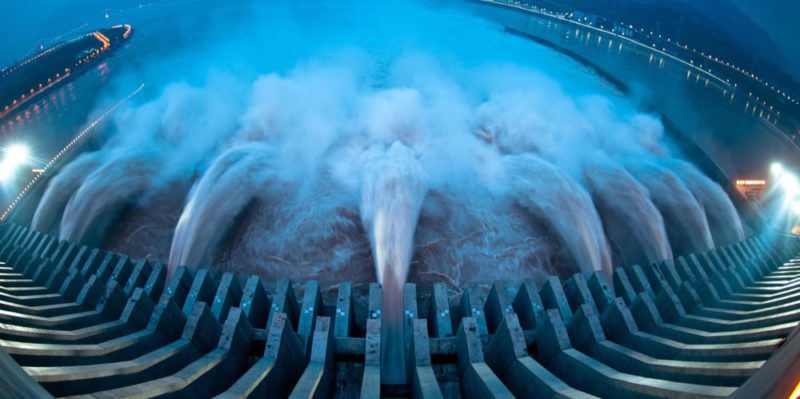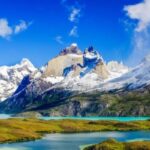We explain what hydrography is, its importance in geography and its characteristics. Also, its relationship with hydrology.

What is hydrography?
Hydrography is a branch of geography that is dedicated to the systematic description and study of bodies of water of the planet, especially continental waters, that is, the water resources of each specific region. In this sense, it is close to other geographical disciplines such as hydrology, geomorphology, oceanography and climatology.
The disciplinary approach of hydrography comprises two distinct branches:
- Marine hydrography Specialized in capturing and studying information about the ocean: the ocean floor, coasts, tides and currents, and especially the way to capture all that information cartographically.
- Hydromorphometry. Dedicated to the study of hydrographic basins: their shapes, dimensions, composition, etc.
The term hydrography comes from the 16th century, as an attempt to establish an analogy with geography, but applied to the percentage of the world that is underwater (geo = earth/ hydro = water). However, throughout history, this discipline demonstrated its usefulness not only theoretically, but also applied to cartographic, economic and military matters.
For this reason, it is part of the national geographic services of most countries. Even there is an international hydrographic information network carried forward by the Hydrographic Organizationfounded in 1921 and based in Monaco.
On the other hand, the term hydrography is used to name all the water resources of a given region.
See also: Physical geography
Characteristics of hydrography
Hydrography:
- Focuses his studies on continental water resources without excluding everything related to the sea, without entering into the specialized areas of disciplines such as oceanography.
- Share your interests with other geographic branches and cartographic, especially with regard to understanding the natural resources of each region. However, this approach should not be confused with that of hydrology, dedicated to the study and distribution of the waters present in the Earth's crust and atmosphere.
- He is interested in issues such as hydrographic basins, river sedimentation or hydrographic slopes. In summary, interested in the way continental waters flow into the oceans and endorheic lakes.
Importance of hydrography
Hydrography It is a fundamental science for the use of water resources of a given geographic region, which together represent a very low percentage of the total water on our planet, so they must be managed based on scarcity criteria.
On the other hand, the hydrographic information is key to the best and most accurate geographical knowledge of regional geography, which in turn entails economic and military advantages over those who ignore the world around them.
Uses of rivers

From a hydrographic point of view, rivers have the following uses and exploitations:
- They allow irrigation a key activity in the development of agriculture, which translates into better and more abundant food generation.
- They allow river navigation which is an extremely practical form of transportation in nations without a sea coast, or even in those that combine their coasts with good-sized rivers that allow merchandise to reach the interior of the territory.
- They allow hydroelectric power generation by building dams or taking advantage of natural waterfalls to install turbines powered by water. This type of energy is extremely economical and reliable.
- They are suitable for fish farming and fishing which are economic activities that also provide food to the population.
- They own recreational uses such as swimming, water sports and spas, which affects culture and tourism.
- They own mining potential since rivers usually carry valuable minerals that can then be filtered or collected in different ways.
- They toast abundant water for various industries chemicals, construction or manufacturing.
Hydrography and hydrology
As we said previously, both hydrography and hydrology share certain specific contents, but they do so from very different perspectives and contexts.
Hydrography focuses on the understanding and recording of the water resources of the continental crust and/or the oceanic crust, from a perspective very close to geography. Instead, hydrology deals with the distribution and properties of water on the planet both in soils, oceans, atmosphere and glacial masses.
So, The meeting point of both disciplines is the rivers and the seas but hydrology goes much further, as it aspires to be, basically, the science of water on our planet.
Hydrography in Mexico

The Mexican nation has a vast water network up to 600 kilometers long, which includes rivers and other surface sources, which flow through approximately 60% of the territory total.
Added to this are numerous underground reservoirs (95% of the total Mexican water resources), which provide around 75% of the water for human consumption, since The climatic differences between the different regions of the territory produce marked differences in terms of humidity.
Thus, the north of the country is much more arid, with little rainfall and stationary water presence, while in the south the rains are more constant, given its humid tropical climate. This configuration makes access to drinking water one of the main difficulties faced by the Mexican population, especially those who reside in remote regions.
On the other hand, Mexico has important coastlines in both the Atlantic Ocean (the Gulf of Mexico) and the Pacific and an important chain of lakes and lagoons, many of them of volcanic origin. It also has important rivers such as the Bravo, Lerma, Yaqui, Balsas, Mayo, Colorado, Papaloapan, Istmo, Tonalá, Pánuco and Usumacinta.
Continue with: Hydrosphere
References
- “Hydrography” on Wikipedia.
- “Hydrography” in Encyclopedia.us.
- “Hydrography” (video) in Everything for children.
- “World Hydrography Day” in Intachicos.
- “Hydrography” (video) at National Geospatial-Intelligence Agency.
- “Hydrography (cartography)” in The Encyclopaedia Britannica.





